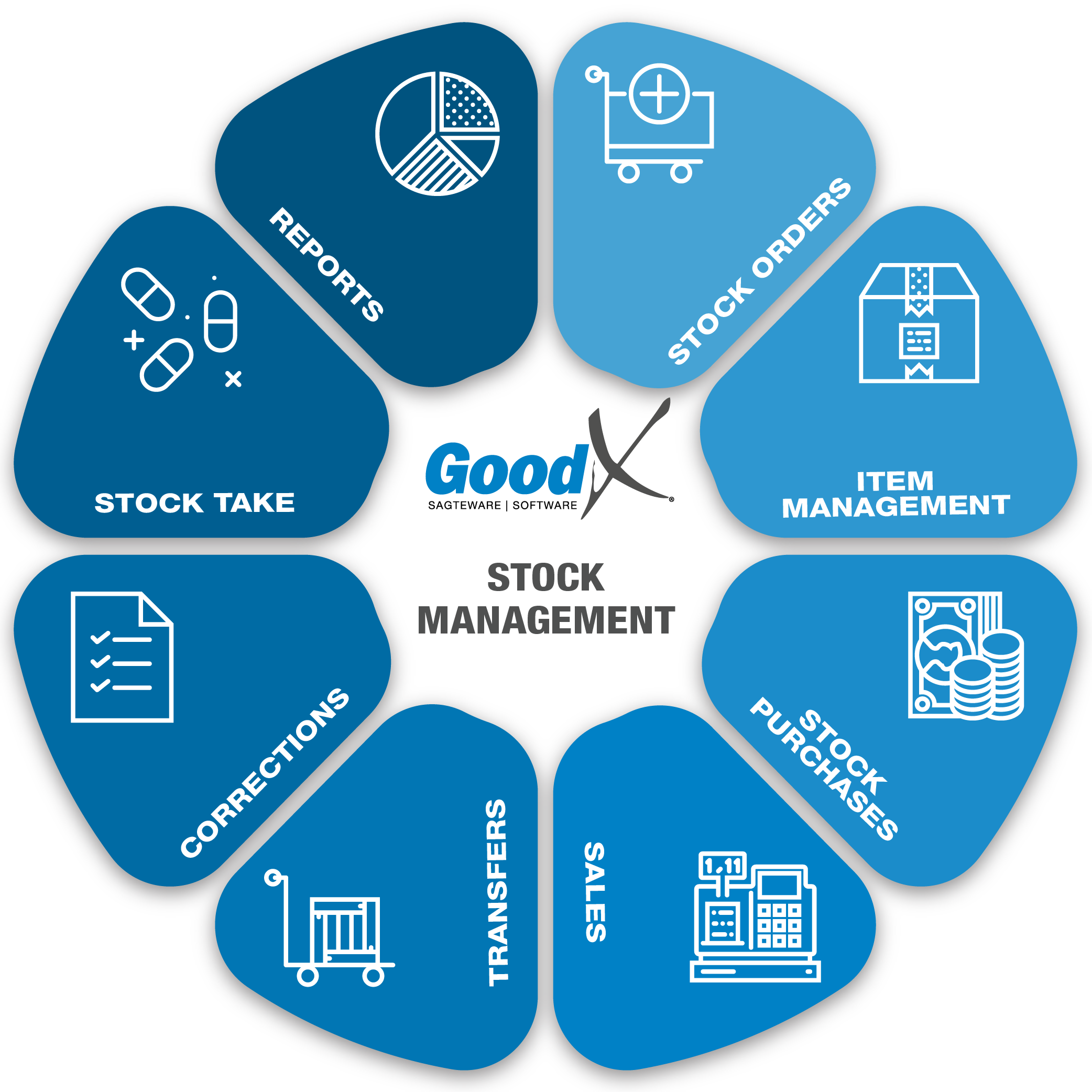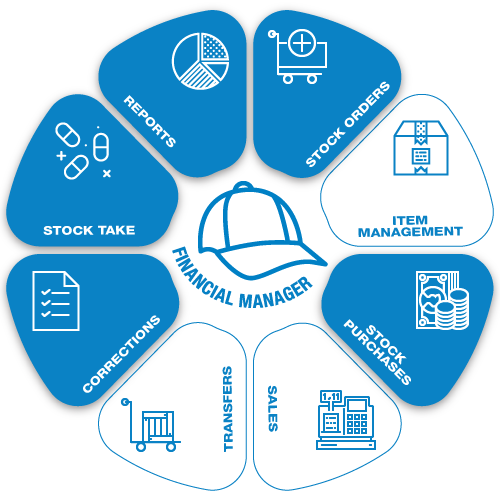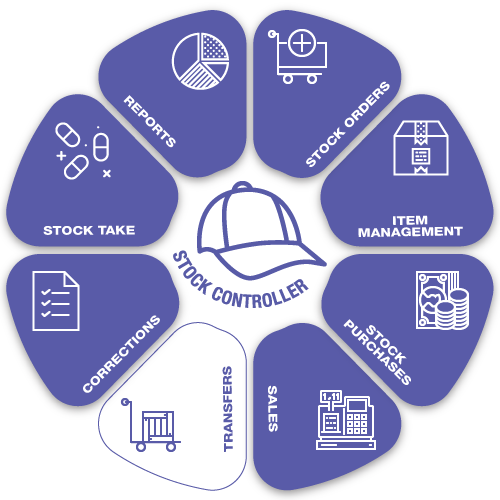Best Practice Guidelines: Stock Management

Copyright © 2020 GoodX Software. All rights reserved.
GoodX online Learning Centre
learning.goodx.co.za
1. Introduction to Critical Business Processes
1.1. Introducing Roles and Responsibilities in Stock Management
To manage stock successfully, all roles in a healthcare practice or hospital who have an impact on stock must be properly trained and concerned with completing the necessary tasks involving stock. The following is a list of all the roles involved in the stock management process as well as a summary of their responsibilities. All users should understand the full stock management process, but users that perform one or more of these roles must make sure that they study the chapters applicable to their roles and complete all tasks associated with their roles.
Consider the following:
- Make sure that all employees know what their roles are and what is expected of each role by documenting the roles. A lack of proper role division and work definition can result in needed tasks not being completed, which results in poor stock management.
- If one role in the stock management process fails to complete needed tasks, all quantities and financial figures will be erroneous and unreliable.
- Role division gives the practice the ability to:
- divide work optimally between personnel;
- implement a separation of duties;
- implement access control.
- This best practice guidelines book is designed to assist the practice / hospital to implement proper procedures per role so that all critical business processes are completed and can be audited with the internal controls as described in the GoodX Healthcare / Hospital Management Internal Controls book.
Roles in stock management
 |
We suggest that the following roles be defined in the practice or hospital. Please note that you do not need to recruit each of these roles, but one person can cover more than one of these roles, depending on the size of your practice / hospital. When recruiting staff you can use these role descriptions to make sure that the persons have all the necessary skills to make your stock management a success and that all personnel know what their responsibilities are. |
|---|
 Financial ManagerStock Orders: The Financial Manager will approve stock orders and pay suppliers before delivery or at the end of the month. Stock Purchases: Ensure the correct prices were invoiced when the stock was purchased from the supplier as per the contract or agreement. Pay the Supplier per invoice and on the correct time period as the agreement. Check the account of the Supplier against the system and reconcile the Suppliers account with the system. Corrections: Sign off all corrections that were done. Capture Credit Notes that were received from suppliers for stock that was sent back or incorrectly invoiced. Ensure all Credit notes were received from suppliers as soon as possible. Correct any incorrect capturing of supplier invoices on the system by the Creditors Clerk by creating Credit notes. Stock Take: Ensure that if overtime must be paid that the overtime is approved. Consolidate the counting locations into the general bin. Draw the Variance report and Investigate the Variance report with the Stock controller. All variances must be explained and investigated with the Stock Controller. Correct any typing or counting errors that were made. Do some spot-checks. Post the Stock take. Reports: Check the stock value. Ensure all transactions have been posted from all the departments. Draw the stock on hand report to ensure the correct figures are supplied to the top management, shareholders and auditors. Ensure no negative stock have been dealt with and corrected. |
|---|
|
|
|





